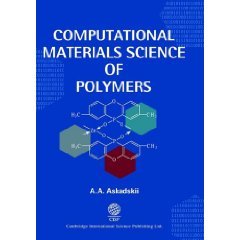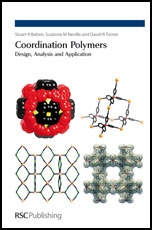Polymer Foams Handbook: Engineering and Biomechanics Applications and Design Guide

Nigel Mills, "Polymer Foams Handbook: Engineering and Biomechanics Applications and Design Guide"
Butterworth-Heinemann | 2007-03-23 | ISBN: 0750680695 | 562 pages | PDF | 9,8 MB
This handbook explores the applications of polymer foams, and the properties that make them suitable for so many applications, in the detail required by postgraduate students, researchers and the many industrial engineers and designers who work with polymer foam in industry.
It covers the mechanical properties of foams and foam microstructure, processing of foams, mechanical testing and analysis (using Finite element analysis). In addition, it uniquely offers a broader perspective on the actual engineering of foams and foam based (or foam including) products by including nine detailed case studies which firmly plant the theory of the book in a real world context, making it ideal for both polymer engineers and chemists and mechanical engineers and product designers.
* Complete coverage of the mechanical and design aspects of polymer foams from an acknowledged international expert: no other book is available with this breadth making this a plastics engineer's first choice for a single volume Handbook
* Polymer foams are ubiquitous in modern life, used everywhere from running shoes to furniture, and this book includes nine extensive case studies covering each key class of application, including biomechanics
* Offers a rigorous mechanical and microstructure perspective, plus a computer based chapter: Essential for engineers and designers alike.
حمل من
http://uploading.com/files/4Z10RHDN/PolymFo.rar.html
اومن
http://depositfiles.com/en/files/49xarqaox
او من
http://rapidshare.com/files/194191021/PolymFo.rar

Nigel Mills, "Polymer Foams Handbook: Engineering and Biomechanics Applications and Design Guide"
Butterworth-Heinemann | 2007-03-23 | ISBN: 0750680695 | 562 pages | PDF | 9,8 MB
This handbook explores the applications of polymer foams, and the properties that make them suitable for so many applications, in the detail required by postgraduate students, researchers and the many industrial engineers and designers who work with polymer foam in industry.
It covers the mechanical properties of foams and foam microstructure, processing of foams, mechanical testing and analysis (using Finite element analysis). In addition, it uniquely offers a broader perspective on the actual engineering of foams and foam based (or foam including) products by including nine detailed case studies which firmly plant the theory of the book in a real world context, making it ideal for both polymer engineers and chemists and mechanical engineers and product designers.
* Complete coverage of the mechanical and design aspects of polymer foams from an acknowledged international expert: no other book is available with this breadth making this a plastics engineer's first choice for a single volume Handbook
* Polymer foams are ubiquitous in modern life, used everywhere from running shoes to furniture, and this book includes nine extensive case studies covering each key class of application, including biomechanics
* Offers a rigorous mechanical and microstructure perspective, plus a computer based chapter: Essential for engineers and designers alike.
حمل من
http://uploading.com/files/4Z10RHDN/PolymFo.rar.html
اومن
http://depositfiles.com/en/files/49xarqaox
او من
http://rapidshare.com/files/194191021/PolymFo.rar















